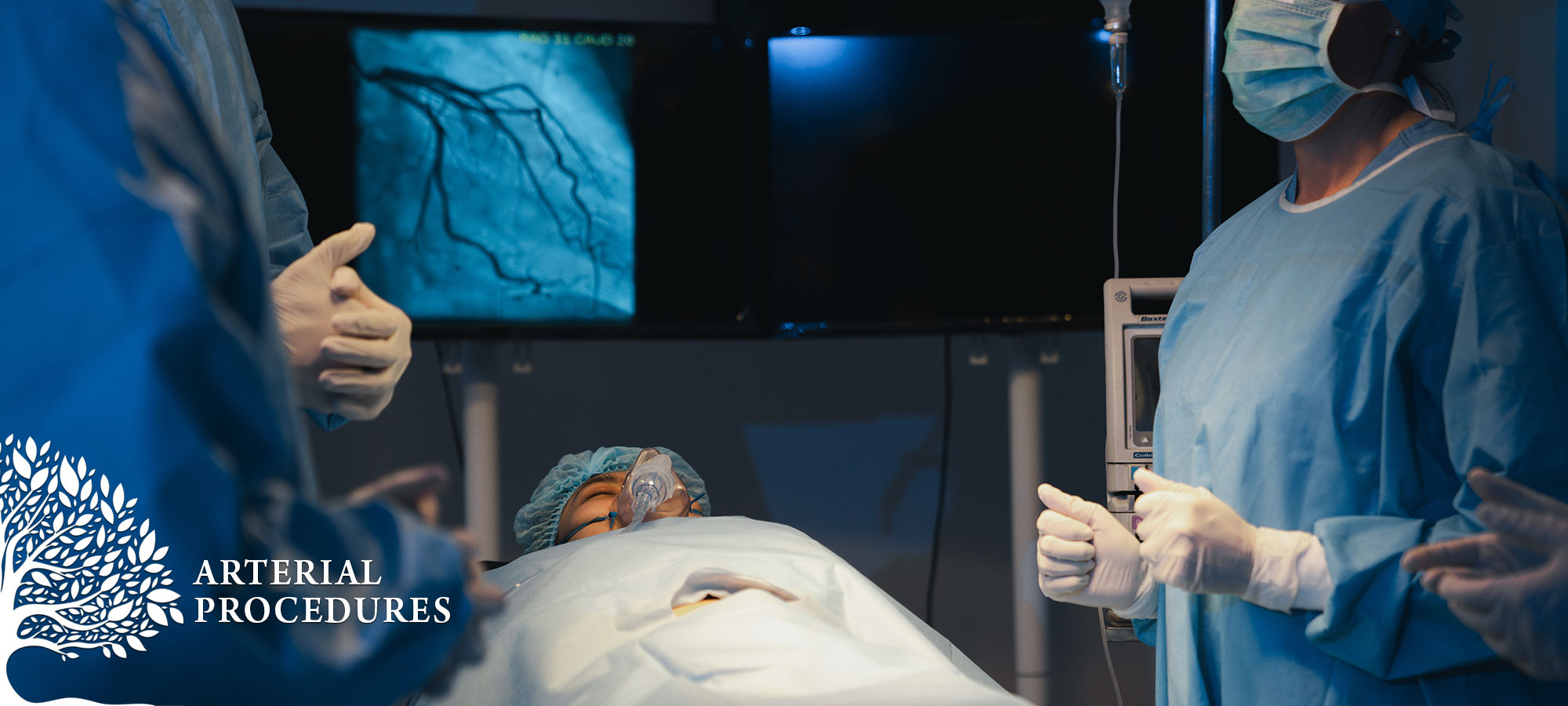
Arterial Procedures
Vascular Wellness Center also provides an array of arterial procedures tailored to each patient’s individual medical requirements. For further details, refer to the sections below.
Angiogram
An angiogram is a diagnostic procedure that produces images of the arteries. By injecting contrast dye, doctors can observe and assess blood flow, helping them determine the best course of treatment.
Angioplasty
Angioplasty is designed to repair or restore blood flow in the arteries using a special balloon-tipped catheter. When the balloon is inflated, it helps open up the blocked artery. This process often allows a stent to be placed, supporting the artery walls and preventing collapse, thereby re-establishing proper circulation.
Atherectomy
An atherectomy targets fatty deposits or plaque (often referred to as “clogged arteries”) by using a specialized catheter to remove this buildup from the arterial walls. This minimally invasive procedure can frequently be performed in an outpatient setting.
Arterial Stent Procedure
Typically performed after angioplasty, this involves placing a mesh tube (stent) in the artery once the balloon has widened it. The stent provides support for the artery wall, promoting normalized blood flow.
Renal Angioplasty/Stent Repair
During this endovascular procedure, a wire and catheter are navigated through the arteries to reach those supplying the kidneys. Plaque or blockages often occur where the artery originates. By using a small balloon and a stent, the blockage is opened, boosting blood flow to the kidney.
Tibial-Pedal-First Procedure
This relatively new method for managing Peripheral Arterial Disease (PAD) uses arterial access in the lower leg or foot. From our experience, accessing these arteries promotes a safer, more comfortable way to restore blood flow to the leg, enabling earlier mobility and discharge.
